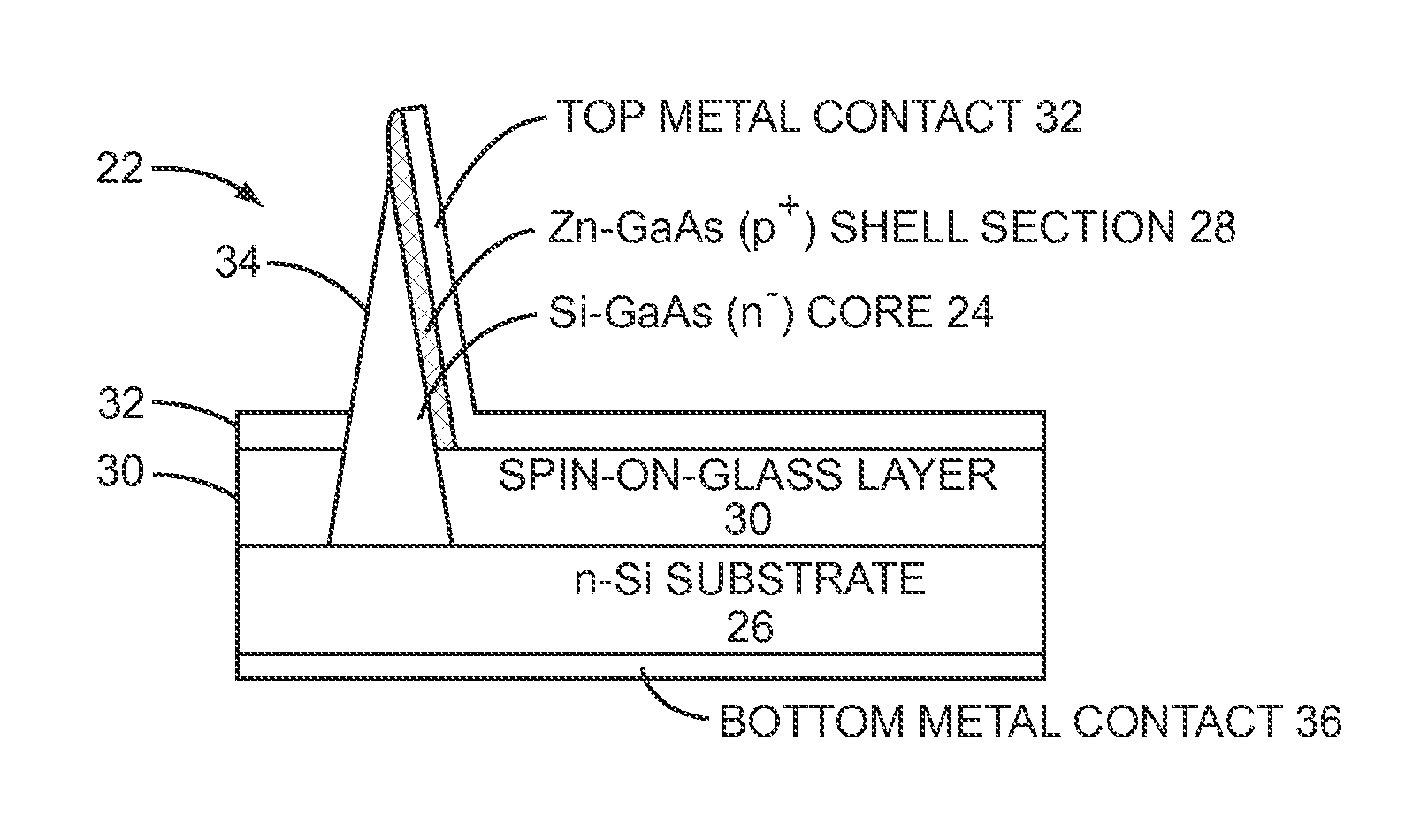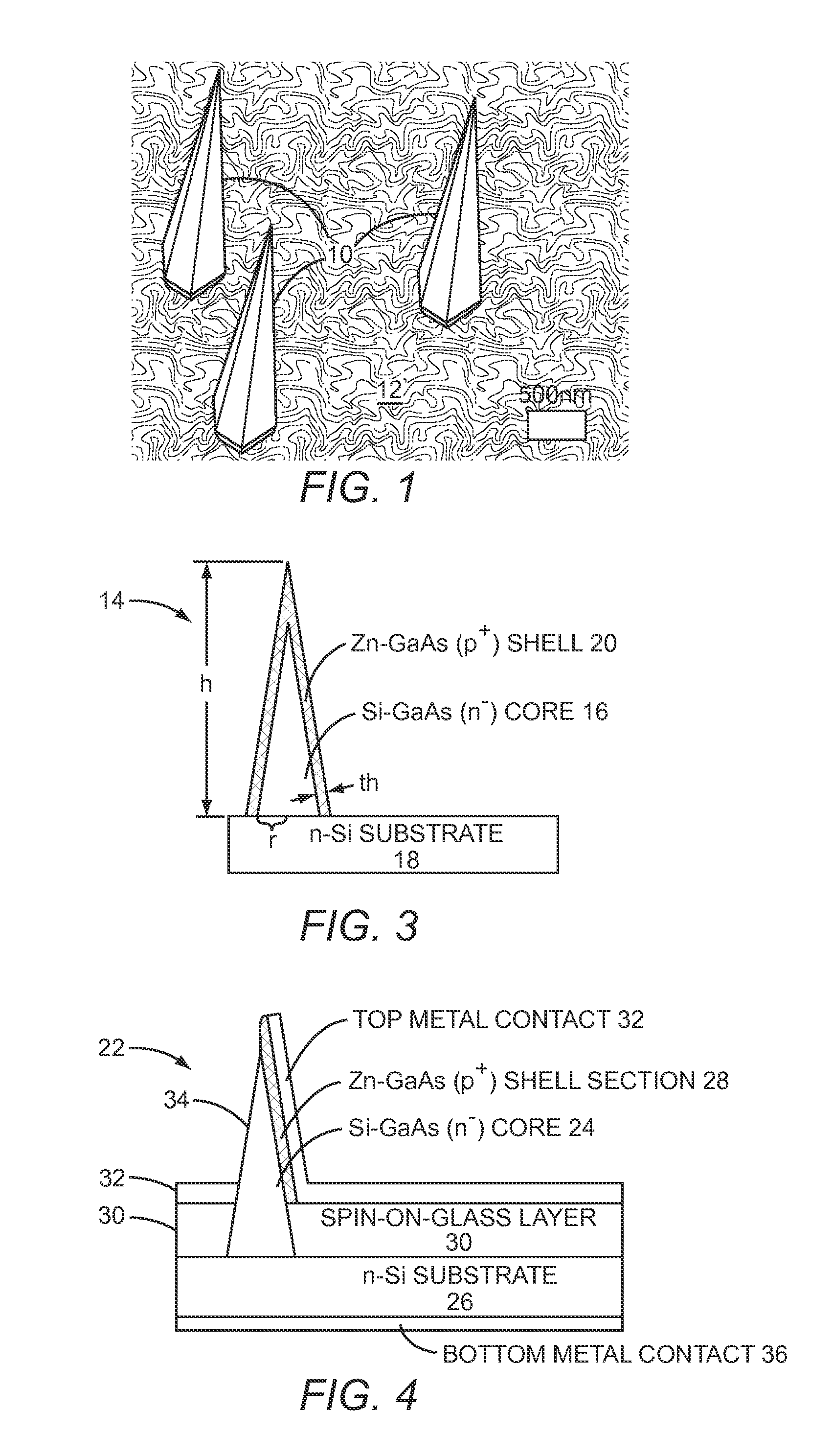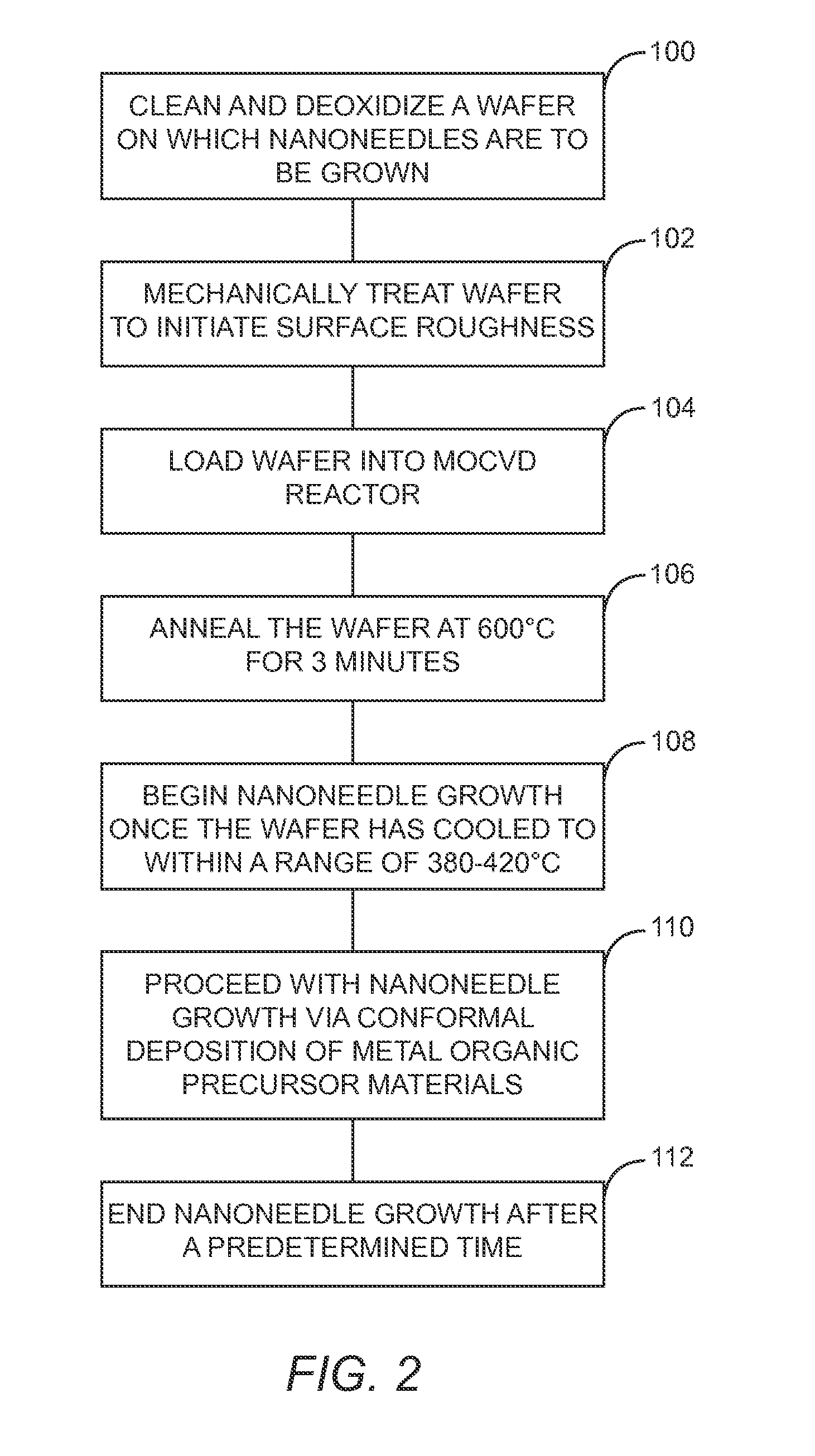Nanoneedle plasmonic photodetectors and solar cells
a plasmonic photodetector and nano-needle technology, applied in the field of nano-sized transducers, can solve the problems of difficult batch fabrication process, inability to integrate, and inability to grow direct-bandgap iii-v compound materials in thin-film growth, etc., and achieve the effect of improving device performan
- Summary
- Abstract
- Description
- Claims
- Application Information
AI Technical Summary
Benefits of technology
Problems solved by technology
Method used
Image
Examples
Embodiment Construction
[0029]The embodiments set forth below represent the necessary information to enable those skilled in the art to practice the disclosure and illustrate the best mode of practicing the disclosure. Upon reading the following description in light of the accompanying drawing figures, those skilled in the art will understand the concepts of the disclosure and will recognize applications of these concepts not particularly addressed herein. It should be understood that these concepts and applications fall within the scope of the disclosure and the accompanying claims.
[0030]In an embodiment of the present disclosure, a Gallium Arsenide (GaAs)-based nanoneedle photodetector is monolithically grown and processed on a silicon (Si) substrate using a complementary metal-oxide-semiconductor (CMOS)-compatible catalyst-free and low-temperature (400° C.) crystal growth technique. Due to the catalyst-free nature of the crystal growth technique, there is no metal contamination of either the Si substrat...
PUM
 Login to View More
Login to View More Abstract
Description
Claims
Application Information
 Login to View More
Login to View More - R&D
- Intellectual Property
- Life Sciences
- Materials
- Tech Scout
- Unparalleled Data Quality
- Higher Quality Content
- 60% Fewer Hallucinations
Browse by: Latest US Patents, China's latest patents, Technical Efficacy Thesaurus, Application Domain, Technology Topic, Popular Technical Reports.
© 2025 PatSnap. All rights reserved.Legal|Privacy policy|Modern Slavery Act Transparency Statement|Sitemap|About US| Contact US: help@patsnap.com



